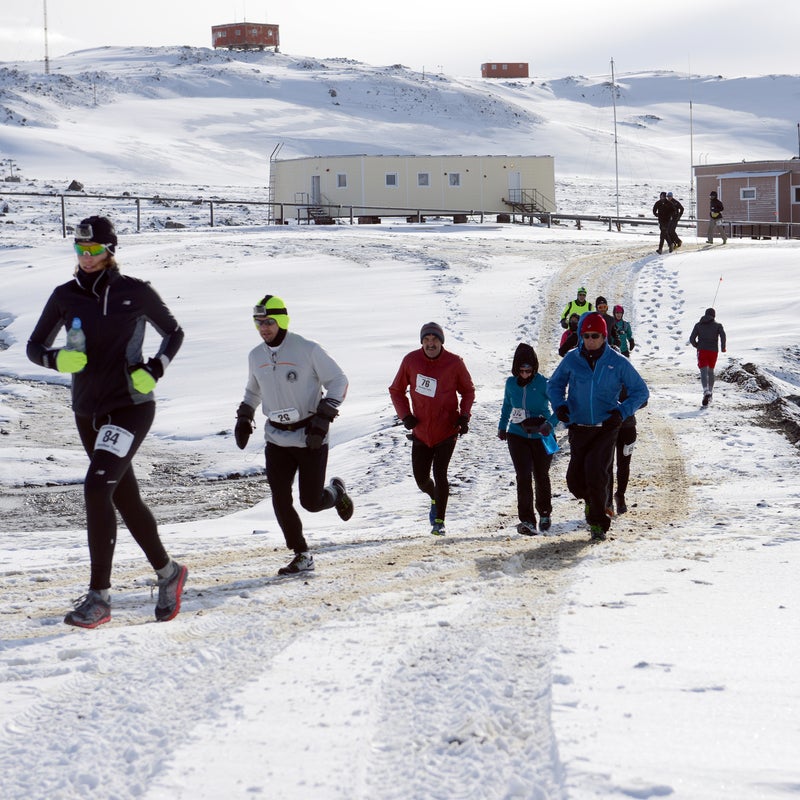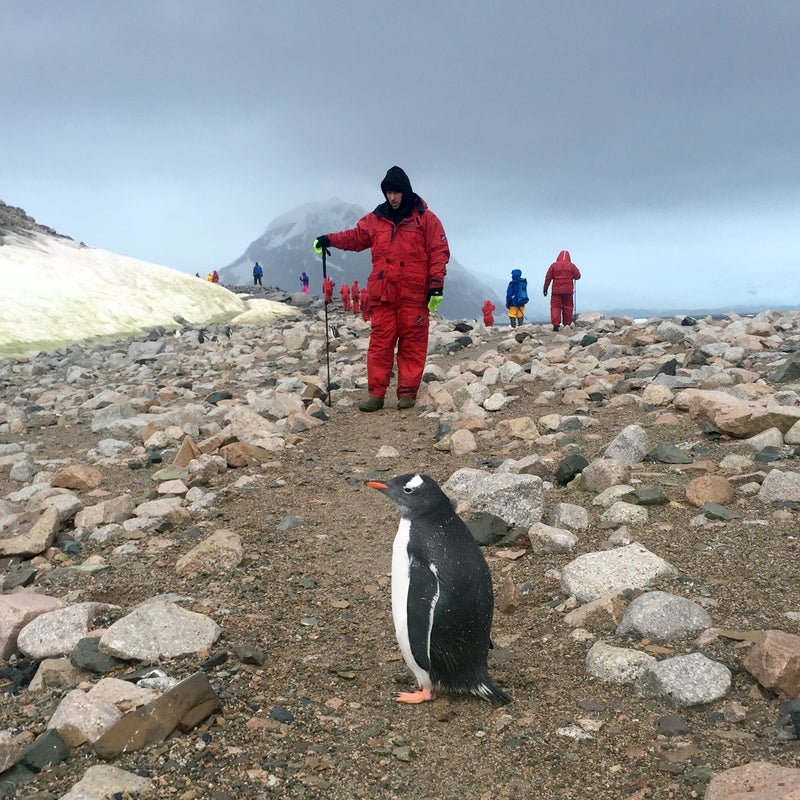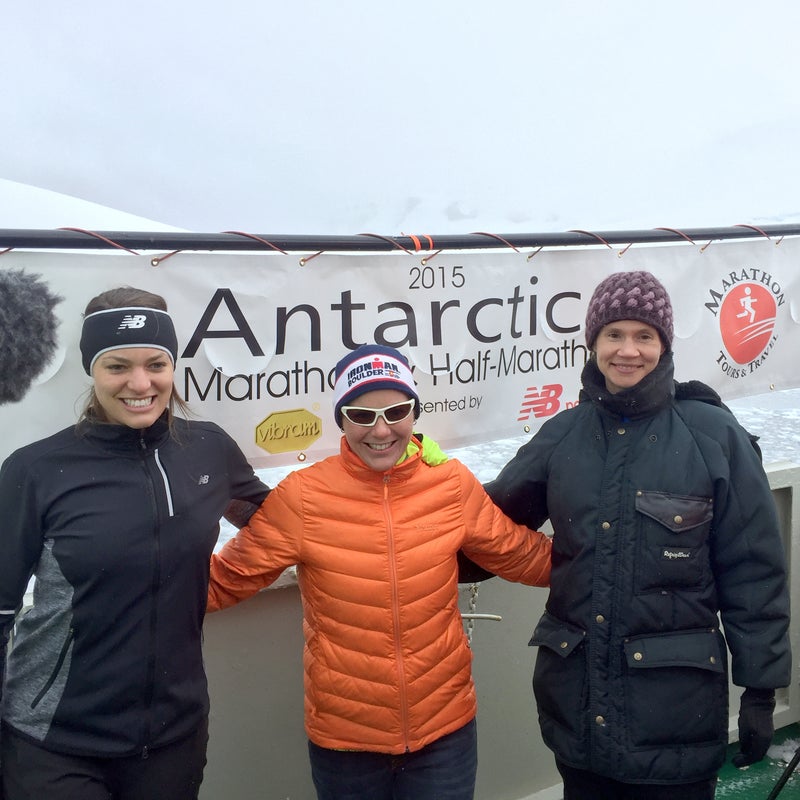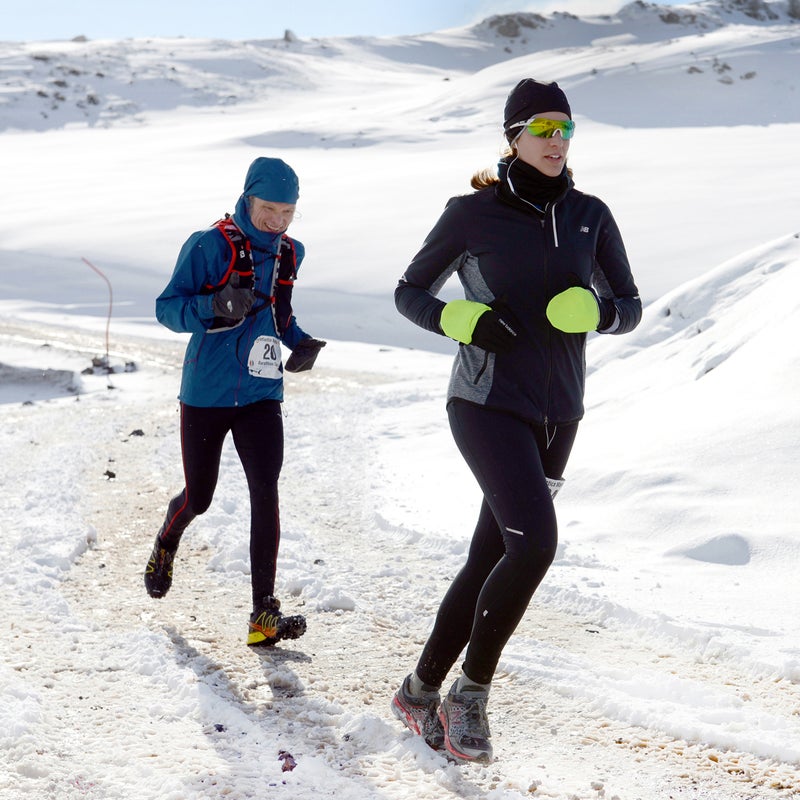One bird at a time. That’s how Lindsay Wiese stayed motivated during the 2015 Antarctica Marathon last March. The 27-year-old runner and triathlete from San Francisco used this mantra to power her through: “I will not throw up. I will focus on the next penguin and I will be perfectly fine.”
It worked. On a wet, muddy, hilly, 4.4 mile loop that climbed a total of 3,000 feet on King George Island, the largest of the just off the , Wiese lapped the course six times and finished the race in 4:25:37. Which might not sound especially fast, until you remember that she was running on essentially the world’s largest sheet of ice in conditions that were brutal and unforgiving, even by the white continent’s standards: Heavy rains the night before caused so much glacial runoff that the course was a soaking mess. There were places so sludge-filled that Wiese’s shoes were almost sucked off her feet in places.
“I spent most of the race soaking wet from the calf down,” says Wiese. This was in freezing temperatures with winds topping out at over 30 miles per hour. That’s why anyone who runs a race in Antarctica knows that normal race times need to be adjusted using the golden rule: Add an hour to your typical marathon. Wiese, for her part, only tacked on 25 minutes to hers, which was fast enough to earn her a third-place finish for women.
The fact that she was even running was impressive. Like all the 136 of competitors, who hailed from nearly two-dozen countries and each traveled an average of 7,000 miles to get to the final launch point, Ushuaia, Argentina, the southern-most city in the world, Wiese had spent the previous day on a Russian icebreaker, crossing the notorious 500-mile Drake Passage, the roughest sea on earth, where 32-foot swells are considered average. “As I was running, I felt like I was still rocking back and forth on the boat,” says Wiese. “Part of the adventure is to convince your body that this is a good idea,” she says.

It also didn’t help that Wiese only had three weeks to prepare for the race. With an intense job as the Corporate Communications Lead for tech company Square, a wedding to plan back in her home state of Ohio, and an Ironman 70.3 triathlon to train for in Kona, Wiese didn’t even know the Antarctica Marathon existed. Then she saw a contest sponsored by Vibram, entered, and won two all-expenses-paid trips to the race—one for her and one for her fiancé, Ryan.
“At first I thought it was some hoax,” says Wiese. “But winning the contest has actually been really cool because it’s inspired me to take more chances on things.”
Wiese doesn’t need much inspiration in that area. Since running her first 10k, a Thanksgiving Turkey Trot to lose the dreaded Freshman 15 her first year of college, Wiese has run eight half-marathons and five full marathons. She mixed it up this year and decided to train for her first half-Ironman. Her already grueling weekly training load included a weekly rotating schedule of boot camps, tempo runs, indoor speedwork, cycling classes, master’s swim training, and long hilly runs around Wiese’s Pacific Heights neighborhood.

To fit in marathon training she added a few long hour-and-a-half runs, eventually working up to a 20-miler right before she left for Antarctica. Her secret weapon, says Wiese, was her fiancé’s cooking. Every night after a tough workout, Ryan would “have an amazing dinner on the table,” she says, adding that the introverted engineer is so in tune with the joy running brings to Wiese, that he proposed marriage after she crossed the finish line at the Columbus Marathon.
In Antarctica, Wiese’s training stood up to the challenge. It was the erratic weather and the stringent rules surrounding the self-supported race that were most difficult. To handle the high winds and hypothermic conditions, Wiese wore an ensemble of New Balance wool socks, thick running pants, a long-sleeve running shirt, a long-sleeve thermal layer, a running jacket, gloves, ear warmers, and a running hat, as well as her own fleece neck gator. Ultimately, the only pieces she had to strip off were the gloves and the gator. Her most essential item? The Leadville 1210v2 shoes by far, says Wiese, which New Balance, one of the title sponsors of the event, supplied to all 200 participants. “They have this new Vibram sole that was crucial in these wet, muddy conditions.”
To comply with the strict Antarctic environmental restrictions, the marathoners had to pack everything off the island. Before she even left the ship, Wiese unwrapped all of her gummy energy chews, which remained frozen throughout the race. Once on the island, she decided to pass on using the portable toilet, which consisted of a bucket.

But Wiese isn’t the kind of person to be deterred by a little hardship. In fact, running the Antarctica Marathon has inspired her to set a new goal. “In Antarctica I met the most amazing, adventurous people who were running a marathon on their seventh continent,” she says. “I am definitely intrigued now to do that.”
Wiese plans to start in Australia or New Zealand where she and Ryan will honeymoon later this year. “First I have to convince him that running a marathon on our honeymoon is a good idea,” she laughs. In 2016 she wants to run the Big Sur Marathon with her mom and race a full Ironman in Whistler, British Columbia. But Wiese isn’t one to box herself in by stringent time goals.
“I’m afraid I’m going to hate races if I put that much pressure on myself,” she says. “All I want to do is be present, enjoy the race as much as possible, and finish feeling strong.” To do that, she’ll have to come up with a new mantra, as it might be awhile before she can find another marathon in penguin country.

